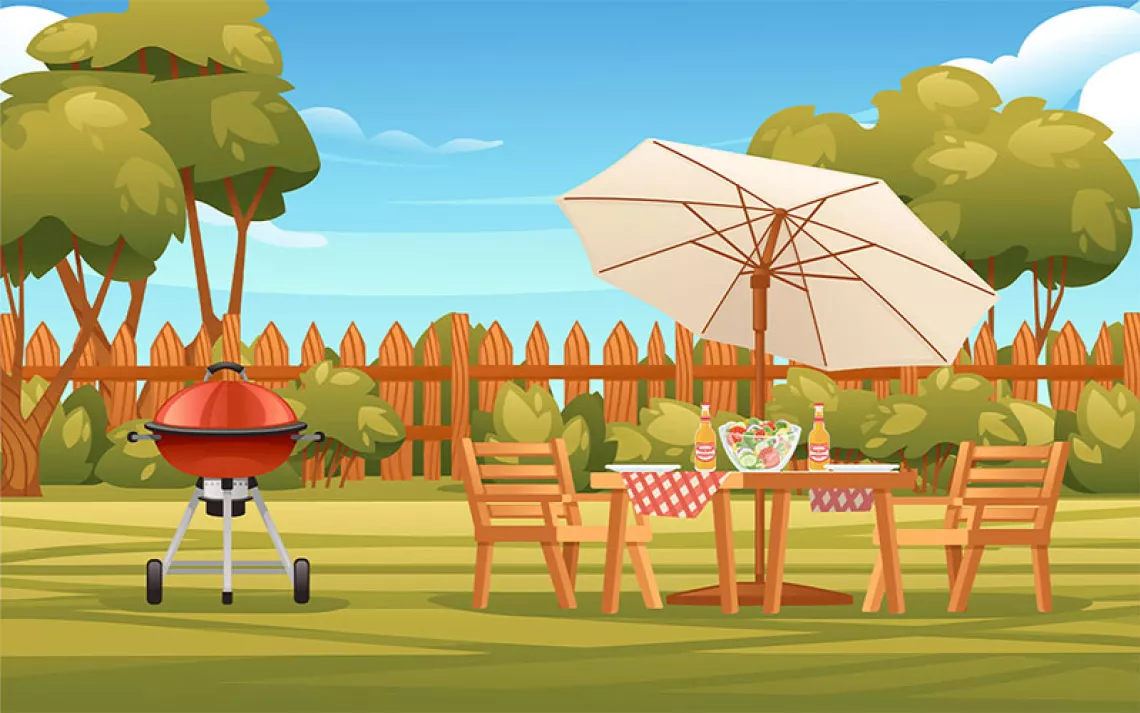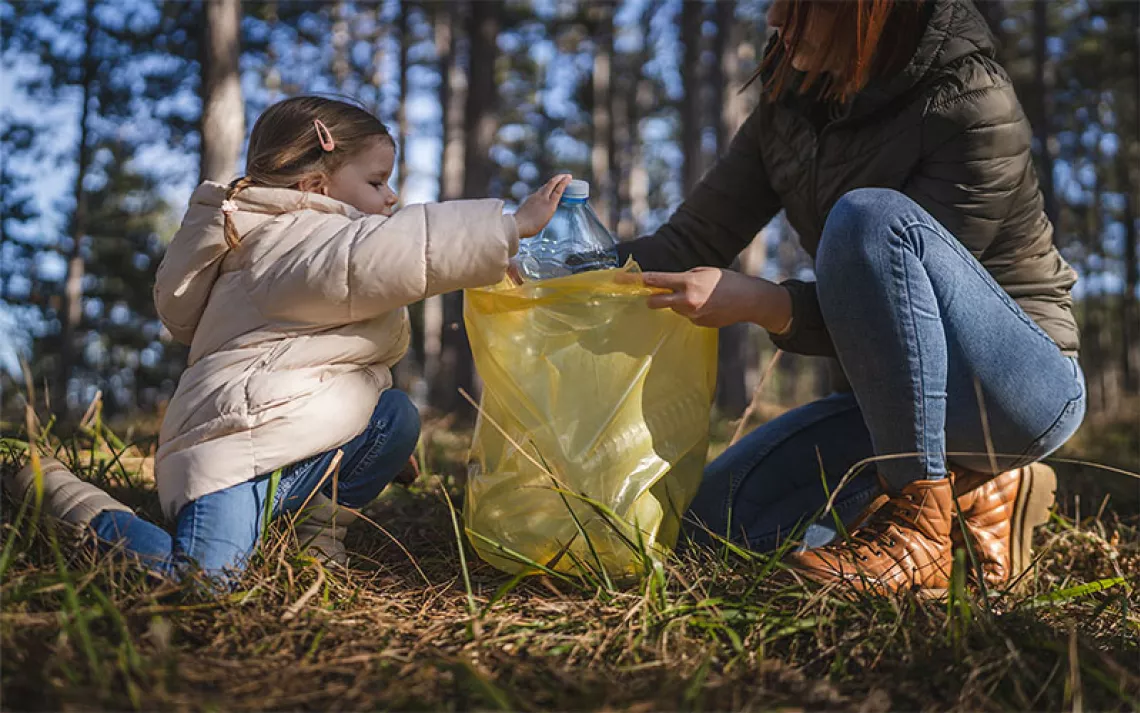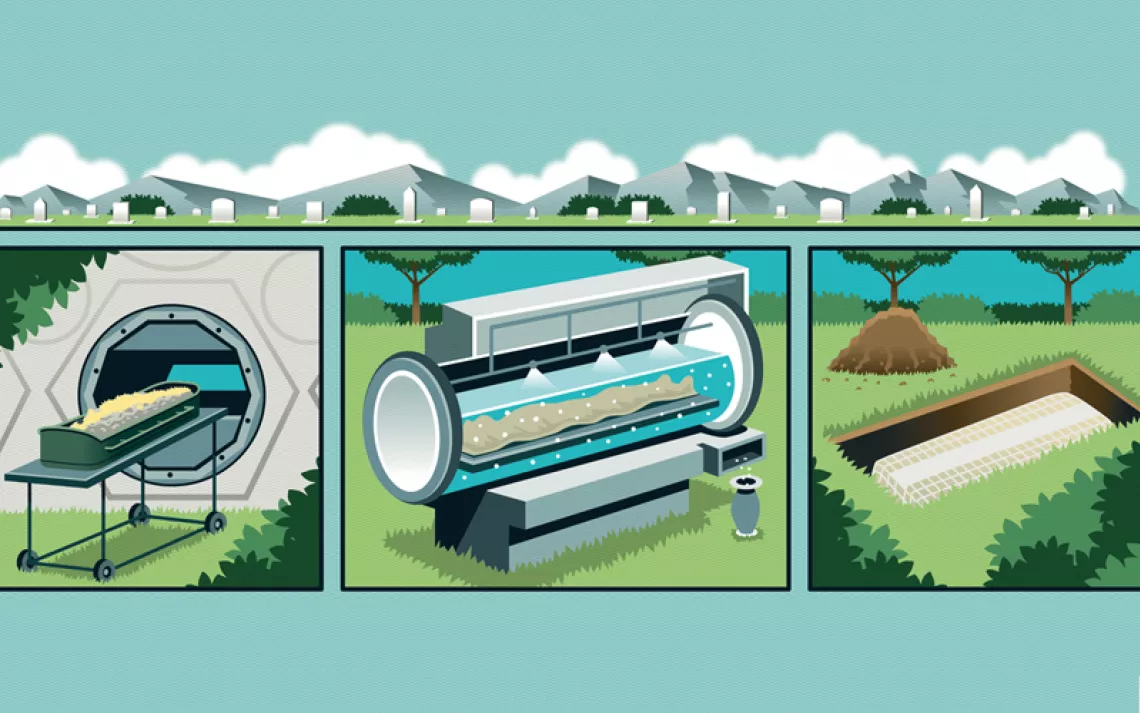Zero Waste, Abundant Rewards

Writer and artist Bea Johnson can fit a year’s worth of trash from her four person family into a canning jar. They live in a zero waste home, eat zero waste meals, and take zero waste vacations.
Is the “zero” in “zero waste lifestyle” a big, empty hole? Deprivation? Self-denial? The lives of our pre-civilization ancestors were “zero waste,” but they were also zero comfort.
Modern zero waste families like Johnson’s, chronicling their experiences in books, films, and blogs, offer a different model. They aren’t missing out on anything. They may have begun with the goal of cutting the household trash to zero, but along the way they found sources of time and money waste disappearing too. The less they waste, the more they can live.
The environmental benefits of living zero waste are impressive, but it’s the financial and practical advantages of the lifestyle that allow the Johnson family to live waste-free comfortably in the long term. In her new book Zero Waste Home, Johnson proves that zero waste is not just an eco-dream; it’s attainable and sustainable.

As the household’s primary shopper, cook, and cleaner, Johnson has figured out how to make zero waste choices that improve, rather than compromise efficiency. “It’s important to make these things as easy as possible so that I can live more and don't have to spend as much time doing chores,” she explained. To lighten her task load and her burden on the planet, she stripped her home of clutter and donated whatever was still useable, which made cleaning house a breeze. She also freed up time by shopping less, because as she transitioned to reusables (refillable fountain pens and washable produce bags, for example), she no longer needed to resupply disposable products. As shopping trips disappeared from the monthly bills, her initially ambivalent husband embraced their new lifestyle, recognizing the economic rewards of zero waste. After six years of savings and simplicity, her family can’t imagine reverting to their old habits.
Is reducing trash really the path to a life of simplicity? “I’m not going to tell you that it’s easier in terms of time savings,” said Amy Korst, author of The Zero-Waste Lifestyle: Live Well by Throwing Away Less. “Obviously the easiest thing you can do is throw something in the trash.” She finds her zero waste lifestyle neither more nor less time consuming than conventional living.
However, she agreed that her new way of life offers significant financial incentives. The whole and bulk foods that stock her pantry save her dollars compared to the pre-packaged and single-serving products she eschews.
Avoiding packaging gives Korst plenty of opportunities to endulge her love of DIY. She makes everything from ricotta cheese to her son’s baby wipes from scratch. For her, “part of the fun [of the zero waste lifestyle] is being creative,” but she emphasized that a waste free life is achievable even for non-DIYers. “I don’t want to make it sound like the only way you can live zero waste is if you become a green Martha Stewart,” she said.
Even products Korst once thought essential have disappeared from her routine, freeing her from a feeling of dependence. While the average American woman turns to an arsenal of a dozen products for the morning’s beautification battle, Korst needs only a bar of soap, shampoo, and conditioner (which does double duty as shaving gel). She makes her own hairspray from salt and water. Her “surfer girl” style spray is “way cheap" and eliminates the need for a product filled with harmful chemicals.
 Going waste free began as a one year competition for filmmaker Jen Rustemeyer, producer of "The Clean Bin Project," but quickly evolved into a way of life. “Just deciding to start was the hardest part,” she said. As she developed routines and discovered the unexpected rewards of zero waste living, “it got easier and easier.” Now there’s no going back. The easy-to-ignore ephemera of conventional lifestyles look different through the eyes of a veteran zero waster. “I haven't used a plastic spoon in four or five years,” she said. “I don't feel nostalgia when I see someone using a plastic spoon. I feel disgust. It’s on our radar; we notice it everywhere.”
Going waste free began as a one year competition for filmmaker Jen Rustemeyer, producer of "The Clean Bin Project," but quickly evolved into a way of life. “Just deciding to start was the hardest part,” she said. As she developed routines and discovered the unexpected rewards of zero waste living, “it got easier and easier.” Now there’s no going back. The easy-to-ignore ephemera of conventional lifestyles look different through the eyes of a veteran zero waster. “I haven't used a plastic spoon in four or five years,” she said. “I don't feel nostalgia when I see someone using a plastic spoon. I feel disgust. It’s on our radar; we notice it everywhere.”
Like Korst, she finds that the constraints of zero waste living help her make smarter shopping decisions. She began to shop only the perimeter of the grocery store, where the unpackaged produce and deli products reside. The new routine limits variety, but the sacrifice had a surprising side effect. “We have fewer options to choose from,” she said. “We’re eating much healthier.”
The three women may seem like extremists blazing a lonely trail. However, they all cite the ways in which their zero waste lifestyles lead them to reach out to their communities for support.
Johnson said that many people are resistant to adopting zero waste habits because they don’t think they can find bulk foods in their area, so she developed an app that helps them tap into the collective knowledge of bulk shoppers everywhere. The ZeroWasteHome bulk app (free) allows its 5,000+ users to search, add, and rate bulk bins and liquid refills worldwide. The Johnson family relies on it when traveling. Now when they roll into a new town with their stomachs growling, Johnson turns to the 5,000 happy-to-help insiders in her handbag.
“The zero waste lifestyle forces you to form connections in your community,” Korst said. On the surface, Korst’s rural town on the Oregon coast, which lacks even basic curbside recycling, seems like an impossible place to live zero waste. But she has built her own network of community members who put her recylables to good use. Much of the material goes to recycling depots and thrift stores. Her empty oatmeal tubs and coffee cans, however, are given a second life in local elementary school classrooms, where young artists refill them with their creativity.
Johnson, Korst, and Rustemeyer are reframing the zero waste lifestyle. They paint zero waste not in terms of what is missing, but what is gained: better health, new skills, financial savings, and more moments with the people who matter most. “It’s about basing your life not on stuff but on experiences,” said Johnson. Although making the switch requires research and some major changes up front, “once you get a system in place it’s not only doable, it’s downright easy,” said Korst. “I feel I live a very normal adult American lifestyle that is not radical or exceptionally liberal or hippie or granola. I’m an average American from the outside with this little bonus.”
Bea’s Tips for Going Zero Waste
1. Refuse what you don't need. Whether it is junk mail or a free pen at a conference, when we take these items, we create the demand to make more. When we take them home, they clutter our space. When they break, and we throw them away.
2. Reduce what you already have. Adopting the zero waste lifestyle is not just about consuming less, it's also about letting go of all those items that are not serving you. Instead of letting them clutter your space, donate or resell them so they can serve someone who really needs them.
3. Reuse by replacing all your disposables with reusable alternatives. You can use the money earned from stpe #2 to cover the upfront costs of transitioning to reusables. Buy second hand whenever possible.
4. Recycle only what you cannot refuse, reduce, or reuse. Find programs that accept hard-to-recycle items like shoes and electronics.
5. Rot. There is a composting system for any lifestyle, even urban households have options.
 The Magazine of The Sierra Club
The Magazine of The Sierra Club



